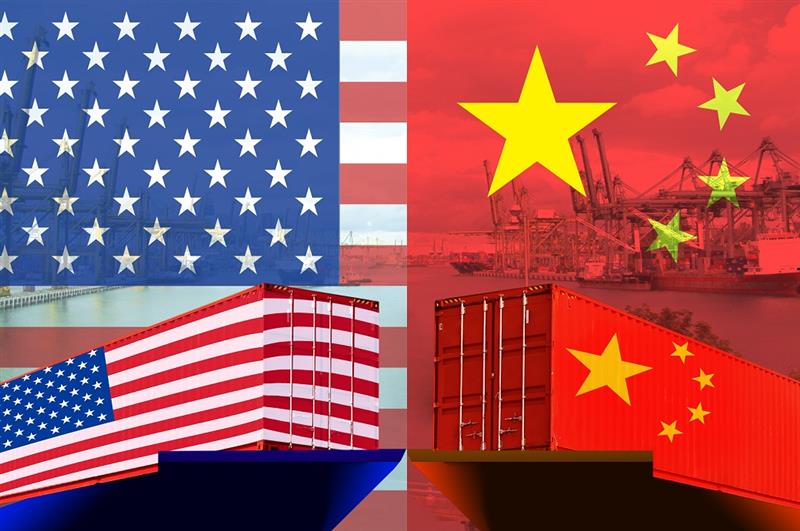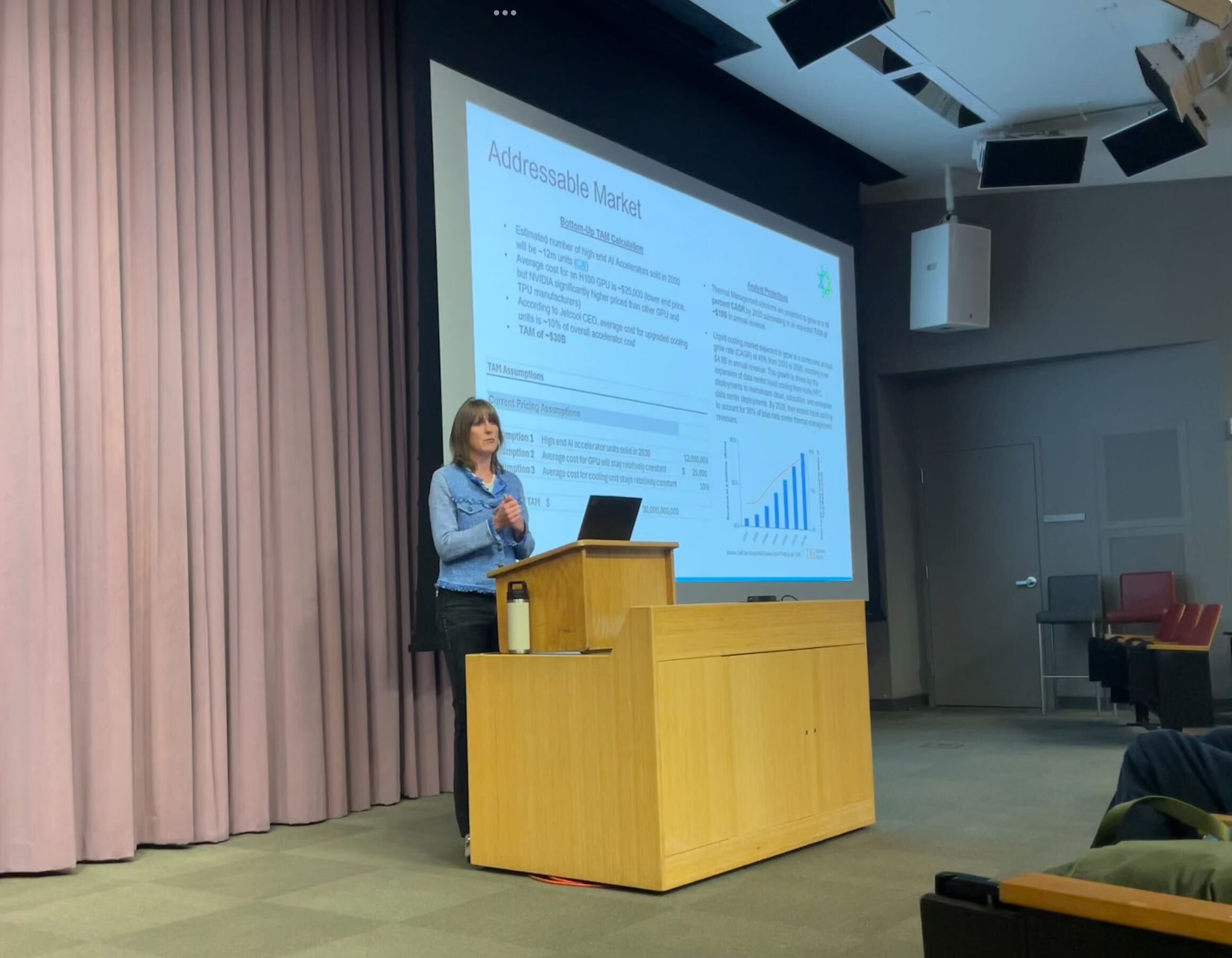China extends suspension of tariffs on U.S. agricultural products – FreshPlaza

Report on China-U.S. Tariff Adjustments and Implications for Sustainable Development Goals
Executive Summary of Recent Tariff Developments
A series of tariff adjustments and trade negotiations between China and the United States occurred in 2025, impacting global trade dynamics. The key events are outlined below:
- March 2025: The State Council Tariff Commission (SCTC) initiated retaliatory measures by imposing tariffs of 10 to 15 percent on 740 U.S. agricultural commodities.
- April 4, 2025: The SCTC announced a significant escalation with a 34 percent retaliatory tariff on all U.S. goods, which took effect on April 10, 2025.
- May 12, 2025: Following diplomatic talks in Geneva, a joint statement was issued, leading to a 90-day suspension of 24 percent of the additional tariffs, while a 10 percent tariff rate was retained.
- August 12, 2025: The SCTC extended the suspension of the 24 percent additional tariff for another 90 days. On the same day, a joint statement from the China-U.S. Stockholm Economic and Trade Talks affirmed China’s commitment to address non-tariff measures.
Analysis of Impact on Sustainable Development Goals
The ongoing trade dispute and subsequent negotiations have direct and significant implications for several of the United Nations Sustainable Development Goals (SDGs).
SDG 17: Partnerships for the Goals
- The cycle of retaliatory tariffs and temporary suspensions undermines the stability required for strong global partnerships (Target 17.1).
- These actions challenge the promotion of a universal, rules-based, open, and non-discriminatory multilateral trading system under the World Trade Organization (Target 17.10).
- The diplomatic engagements in Geneva and Stockholm, however, represent critical efforts to enhance policy coherence and strengthen global partnerships for sustainable development through dialogue and de-escalation.
SDG 8: Decent Work and Economic Growth & SDG 2: Zero Hunger
- The imposition of tariffs, particularly on agricultural commodities, creates economic volatility that threatens sustained and inclusive economic growth (Target 8.1).
- Trade uncertainty directly impacts the livelihoods of agricultural producers and exporters in both nations, affecting rural economies and decent work opportunities.
- By disrupting agricultural trade flows, these measures pose a risk to the resilience of food production systems and the stability of food commodity markets, which are essential for achieving Zero Hunger and ensuring food security (Targets 2.4 and 2.c).
SDG 16: Peace, Justice and Strong Institutions
- The SCTC’s invocation of national and international law highlights the importance of legal frameworks in governing global trade. However, unilateral tariff actions can strain international relations.
- The reliance on bilateral negotiations to resolve disputes underscores the need for effective and inclusive institutions at all levels to mediate conflicts peacefully.
- Building trust and ensuring predictable, non-discriminatory policies are fundamental to fostering peaceful societies and strong institutions capable of upholding international law and promoting sustainable development.
Conclusion and Forward Outlook
- The 90-day extension of the tariff suspension provides a crucial period for continued dialogue aimed at a more permanent resolution.
- A sustainable, long-term agreement is necessary to mitigate the negative impacts on economic growth, food security, and international cooperation, thereby aligning trade policy with the 2030 Agenda for Sustainable Development.
- Global stakeholders, especially within the agricultural sector, will continue to monitor these developments, as the outcome will significantly influence progress toward achieving the SDGs.
Analysis of Sustainable Development Goals in the Article
1. Which SDGs are addressed or connected to the issues highlighted in the article?
-
SDG 17: Partnerships for the Goals
The entire article revolves around bilateral trade negotiations, policy adjustments, and international economic relations between China and the United States. It details the process of reaching a “consensus reached during the China-U.S. economic and trade talks” and issuing joint statements. This directly relates to fostering global partnerships and policy coordination to manage global economic issues.
-
SDG 2: Zero Hunger
The article explicitly mentions that the trade measures and tariffs impact agricultural products. It states that “retaliatory tariffs ranging from 10 to 15 per cent on 740 U.S. agricultural commodities” were imposed and that “agricultural commodities continue to be included in the scope of these trade measures.” Trade policies affecting agriculture are directly linked to food markets, food security, and the livelihoods of farmers, which are central themes of SDG 2.
-
SDG 8: Decent Work and Economic Growth
Trade disputes and tariffs between two of the world’s largest economies have significant implications for global economic stability and growth. The article’s focus on tariff adjustments and trade negotiations reflects efforts to manage economic relationships that affect industries, employment, and overall economic performance, which is a core concern of SDG 8.
2. What specific targets under those SDGs can be identified based on the article’s content?
-
Target 17.10: Promote a universal, rules-based, open, non-discriminatory and equitable multilateral trading system.
The article discusses retaliatory tariffs and subsequent negotiations to suspend them. These actions and counter-actions occur within the broader context of the global trading system. The reference to implementing consensus “in accordance with the Tariff Law… the Customs Law… the Foreign Trade Law… and other laws and regulations, as well as basic principles of international law” points to an effort to manage the dispute through established legal and diplomatic frameworks, aligning with the goal of a rules-based system.
-
Target 17.13: Enhance global macroeconomic stability, including through policy coordination and policy coherence.
The series of negotiations described—from the initial tariffs in April 2025 to the talks in Geneva and Stockholm—are direct examples of policy coordination between China and the U.S. to manage a trade dispute that could otherwise destabilize their economies and the global economy. The issuance of a “joint statement from the China-U.S. Stockholm Economic and Trade Talks” is a clear outcome of this coordination.
-
Target 2.b: Correct and prevent trade restrictions and distortions in world agricultural markets.
The article’s central theme is the imposition and subsequent suspension of tariffs on goods that include “740 U.S. agricultural commodities.” These tariffs are a form of trade restriction. The decision to “suspend… the 24 per cent additional tariffs” on these goods is a direct action to correct or lessen these restrictions, which is the explicit goal of Target 2.b.
3. Are there any indicators mentioned or implied in the article that can be used to measure progress towards the identified targets?
-
Indicator for Target 2.b and 17.10: Level and changes in tariff rates on agricultural products.
The article provides specific quantitative data that can serve as indicators. It mentions the imposition of “retaliatory tariffs of 34 per cent,” a reduction to a “10 per cent additional ad valorem tariff rate,” and the suspension of “24 per cent of the tariffs.” It also notes tariffs “ranging from 10 to 15 per cent on 740 U.S. agricultural commodities.” Tracking these tariff rates provides a direct measure of the level of trade restriction and progress in negotiations.
-
Indicator for Target 17.13: Agreements and joint statements resulting from bilateral negotiations.
The article implies a qualitative indicator for policy coordination. The mention of a “consensus reached during trade talks in Geneva in May 2025” and the release of a “joint statement from the China-U.S. Stockholm Economic and Trade Talks” serve as evidence of successful policy coordination aimed at enhancing macroeconomic stability by resolving trade disputes.
4. Table of SDGs, Targets, and Indicators
| SDGs | Targets | Indicators |
|---|---|---|
| SDG 2: Zero Hunger | 2.b: Correct and prevent trade restrictions and distortions in world agricultural markets. | The specific tariff rates applied to agricultural commodities (e.g., “10 to 15 per cent on 740 U.S. agricultural commodities”) and the changes to them (e.g., suspension of 24% tariff). |
| SDG 17: Partnerships for the Goals | 17.10: Promote a universal, rules-based, open, non-discriminatory and equitable multilateral trading system. | The adjustment and suspension of unilateral tariff measures (e.g., “suspension of the 24 per cent additional tariffs”) based on negotiations and reference to international law. |
| SDG 17: Partnerships for the Goals | 17.13: Enhance global macroeconomic stability, including through policy coordination and policy coherence. | The successful conclusion of negotiations and the issuance of joint statements confirming consensus (e.g., “joint statement from the China-U.S. Stockholm Economic and Trade Talks”). |
Source: freshplaza.com

What is Your Reaction?
 Like
0
Like
0
 Dislike
0
Dislike
0
 Love
0
Love
0
 Funny
0
Funny
0
 Angry
0
Angry
0
 Sad
0
Sad
0
 Wow
0
Wow
0

















































:focal(1500,1000)/https://media.globalcitizen.org/a6/9a/a69a4720-d8a1-4715-b596-18738d03c05c/rotary_polio_hero_image.jpg?#)






/countries/sri-lanka/photo-credit---dmc-sri-lanka.tmb-1200v.jpg?sfvrsn=dc298bcc_1#)


















